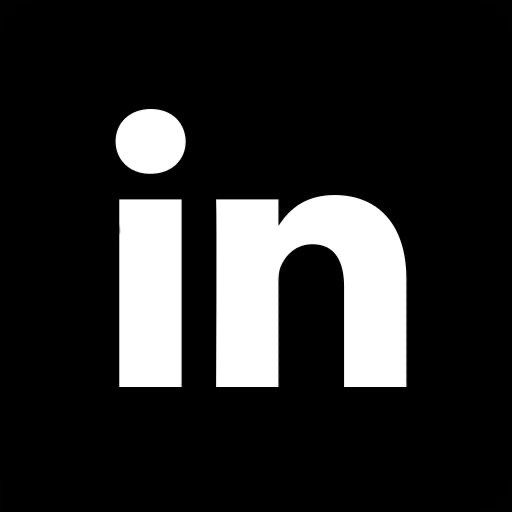Why Your Bing Rankings Are Stuck (And How to Fix It Today)
Your bing rankings might be stuck despite your best efforts. Bing handles over 100 million users daily and owns approximately 10.51% of desktop search engine market share as of January 2024. The platform offers valuable traffic opportunities you shouldn't ignore.
Website owners often focus solely on Google. They overlook Bing's significant 26.5% share of all desktop searches in the U.S.. The platform has grown by an impressive 41.03% since 2019. Bing's traffic quality stands out with lower bounce rates. Understanding Bing's ranking factors becomes crucial to boost your visibility. The platform's audience shows stronger purchasing intent compared to Google's users, despite its smaller market share. This makes monitoring Bing's SEO signals and using appropriate ranking checker tools essential.
This piece explores why your rankings might be struggling and offers five practical solutions you can apply today. These solutions will help you tap into the potential of the world's second-largest search engine, whether you're starting with Bing optimization or improving your current strategy.
Common Reasons Your Bing Rankings Are Stuck
Your site's struggle to climb in Bing's search results means checking specific factors that drive Bing's ranking algorithm. Bing is upfront about using certain metrics that might be holding your site back. Let's get into the most common reasons your Bing rankings stay flat.
Low engagement metrics: bounce rate and dwell time
Bing clearly says that user engagement metrics are crucial to their ranking decisions. Unlike Google, Bing directly confirms using these signals as ranking factors. Bing reviews three key questions about user behavior:
- Did users click through to your site for specific queries?
- Did users stay on your page or quickly go back to search results?
- Did users change their query after visiting your page?
A high bounce rate—the percentage of visitors who leave after viewing only one page—sends a strong negative signal to Bing about your content's relevance. Bounce rates vary by industry and page type, but consistently high rates show potential problems with your content meeting user expectations.
Dwell time—how long visitors stay on your page before returning to search results—is another metric Bing watches closely. Short dwell times suggest your content doesn't satisfy user needs, while longer times usually show valuable content. Christi Olson, Head of Evangelism at Microsoft, puts it this way: "You can have an amazing page that ranks really well, but if users spend a second or two on the page and they click back, there's something wrong with it".
Overuse of exact match keywords without context
Bing still depends more on exact-match keywords than Google does. This doesn't mean you should pack your content with keywords. Keyword stuffing without context can substantially harm your rankings.
Bing values seeing your target keywords in key places (like H1 and H2 tags) and reviews the semantic meaning of your content. Their language models can spot when you're forcing keywords without adding value.
The main difference lies in how you use them—Bing wants to see your exact keywords in your content but penalizes content that looks manipulative. So you need to include your target terms naturally while keeping high-quality, relevant content.
Lack of author credibility and content transparency
Bing puts a strong focus on the quality and credibility of websites and their authors. Bing's official guidelines say they review "the author's or site's reputation" when setting rankings. Content from prominent authorities in specific fields usually gets better treatment.
On top of that, Bing looks for clear authorship and complete content. When Bing reviews credibility, they look at:
- The author's authority in the relevant field
- Content with proper citations and data source references
- How thoroughly the topic is covered
- Clear information about who wrote the content
Bing might push down content that has "name-calling, offensive statements, or uses derogatory language". This difference from other search engines shows Bing's steadfast dedication to quality discourse.
Fabrice Canel, principal program manager at Bing, explains: "It is really about mapping and understanding that this website is an authority for this specific domain". Content without clear authorship, proper citations, or with inflammatory language might rank lower on Bing.
Bing values sites that show expertise in specific topics more than those trying to rank for unrelated subjects. Building yourself as a transparent, credible authority in your field will help improve your Bing rankings.
Fix 1: Improve Content Relevance and Semantic Matching
Bing looks at web pages differently from Google. You need to know how Bing reads and reviews content to make your pages more relevant. This search engine's approach has unique aspects that affect your rankings.
Use synonyms and semantic equivalents naturally
Bing values semantic equivalents when reviewing content. Their guidelines say: "Bing also considers semantic equivalents, including synonyms or abbreviations, which may not be exact matches of the query terms but are understood to have the same meaning". You can't just focus on exact keywords anymore.
All the same, Bing puts more weight on exact-match keywords than Google does, especially in title tags, H1 headings, and opening paragraphs. Here's how to strike the right balance:
- Put exact target keywords in key spots (titles, headings)
- Add natural variations and synonyms throughout
- Use related terms that show topic relevance
- Keep the language natural without forcing keywords
To name just one example, if you target "budget travel tips," use this exact phrase in your title and first paragraph. Then mix in phrases like "affordable vacation advice" or "low-cost travel strategies" throughout your content.
Match user intent with clear headings and structure
Your Bing rankings depend on understanding why people search. SEO experts point to four types of search intents:
- Informational - users want specific information
- Navigational - users look for specific locations
- Local - users need local information or businesses
- Transactional - users want to buy products/services
Your content should address the specific intent behind your target keywords. Bing rewards content that answers queries clearly. Their official documentation states, "The content on your landing page should match what users expect to see for the search they conducted".
Here's how to match user intent:
Research what people really want when they use your keywords. Create descriptive headings that address these search intentions. Build a logical content structure that leads users to answers.
Bing's AI algorithms are great at understanding intent-based content. Their official blog suggests: "Focus on the intent behind the search query rather than just the keywords themselves". This builds trust and meets user needs by delivering valuable information.
Avoid keyword stuffing and thin content
Poor Bing rankings often come from keyword stuffing. Bing warns: "Stuffing your content with specific keywords with the sole intent of artificially inflating the probability of ranking for particular search terms is in violation of our guidelines. It can lead to demotion or even delisting your website from our search results".
The biggest problem is thin content - pages that offer little value. These usually include:
- Pages with too few words that lack detailed information
- Copied text from other sources
- Auto-generated content that makes no sense
Quality content meets user expectations without tricks. Bing says "there are no hard and fast rules on the number of words per page" but suggests that "more relevant content is usually better".
Create original content that answers user questions fully. Add detailed information, examples, and expert opinions to shallow pages. Keep your content fresh and updated. "AI systems depend on the latest, freshest information to determine the most important content to display to searchers".
Focus on semantic matching, intent alignment, and content quality. These signals help break through ranking plateaus and boost your visibility in Bing search results.
Fix 2: Strengthen On-Page SEO for Bing’s Algorithm
Let's talk about the technical aspects of on-page SEO that work best with Bing's algorithm. Google and Bing share ranking factors, but Bing values certain technical elements differently. These elements can substantially affect your site's visibility.
Include exact match keywords in H1 and H2 tags
Bing's algorithm rewards exact match keywords in heading tags. H1 and H2 tags are strong indicators to Bing about your page's main topic. While Google understands context better, Bing still needs to see exact keyword matches in these key positions.
Your H1 tag should feature your main keyword phrase near the start to get the best results. Your H2 tags should contain your secondary keywords. This helps Bing clearly understand your content's focus and relevance.
To name just one example, see how this works with "best running shoes for beginners". Put this exact phrase in your H1, then use related phrases like "affordable running shoes for new runners" in your H2 tags. This approach gives Bing both exact matches and similar variations it likes.
Optimize meta descriptions and title tags for CTR
Your Bing ranking gets better when title tags and meta descriptions boost click-through rates (CTR). Bing actually tells us they use CTR as a ranking signal, which makes this optimization really important.
Title tags that work well in Bing should:
- Stay between 50-60 characters so they don't get cut off
- Start with your main keyword
- Show clear value or trigger emotions
- Use action words (find, uncover, learn)
Meta descriptions act like mini ads for your content. They're not direct ranking factors, but they boost CTR, which Bing watches carefully. The best descriptions:
- Max out at 150-160 characters
- Naturally include your target keyword
- Show a clear benefit or answer questions
- End with a subtle call-to-action
Bing shows longer meta descriptions than Google, so you have extra room to convince users to click through.
Use descriptive alt text for all images
Image optimization matters a lot to Bing, especially through descriptive alt text. The algorithm needs this information when it can't recognize images visually. Well-optimized images help with accessibility and send positive ranking signals.
Your alt text for Bing should:
- Describe images clearly and fully
- Include relevant target keywords without stuffing
- Stay under 125 characters
- Connect the image to your content's purpose
You should also give your image files descriptive names before uploading. "Best-running-shoes-beginners.jpg" works better than "IMG12345.jpg" because it gives Bing's crawlers more context.
These technical tweaks combine with your content improvements to send better ranking signals to Bing. A systematic approach to these changes will boost your site's position in Bing's search results and help you break through previous ranking limits.
Fix 3: Build High-Quality Backlinks from Trusted Domains
Bing stands out from other search engines by giving backlinks extraordinary importance as a core ranking factor. SEO professionals have noticed that Bing values backlinks more than Google, which makes link building critical to improve your ranking performance.
Prioritize backlinks from aged, authoritative sites
The age of linking domains plays a more significant role in Bing's algorithm compared to other search engines. "Bing is obsessed with authority and domain age—maybe even more than Google". A link from a 10+ year old domain with consistent publishing history carries more weight than multiple links from newer websites.
Your link-building efforts should target:
- Aged niche blogs that have existed for many years, even if they publish infrequently
- Industry association websites and regional chambers of commerce
- Educational institutions (.edu domains)
- Government resources (.gov domains)
- Established forums and archived communities that Bing still actively indexes
The linking domains' quality makes a huge difference. A few links from trusted websites send better ranking signals than dozens of lower-quality connections. Bing's guidelines confirm this: "often even just a few quality inbound links from trusted websites is enough to help boost your rankings".
Avoid reciprocal and paid link schemes
Bing warns against manipulative link-building tactics. Their guidelines state that "abusive tactics that aim to inflate the number and nature of inbound links, such as links buying participating in link schemes (link farms, link spamming and excessive link manipulation) can lead to your site being penalized and delisted from the Bing index".
These prohibited practices include:
- Purchasing temporary links to artificially boost link counts
- Using link farms to generate numerous low-quality backlinks
- Excessive reciprocal linking arrangements
- Paid link schemes lacking relevance or value
Bing rewards links that have "grown organically; links added over time by content creators on other trusted, relevant websites that drive real users from their site to yours". This authentic approach to link acquisition creates the foundations of effective ranking strategy.
Use Bing Webmaster Tools to monitor backlinks
Bing Webmaster Tools offers robust features to monitor and manage your backlink profile. This platform gives you applicable information that can shape your link-building strategy and identify potential problems affecting your ranking performance.
The Backlinks report within Bing Webmaster Tools shows detailed information about your site's backlink profile, including:
- Total counts of referring pages
- Lists of referring domains
- Analysis of anchor texts used in backlinks
You can compare your backlink profile against competitors. The Similar Sites feature lets you "enter a competitor URL" and then "see how your site stacks up to your competition in terms of offsite SEO". This competitive analysis reveals link-building opportunities you might otherwise miss.
Bing removed their disavow links feature in October 2023, noting that their "artificial intelligence capabilities... enables us to better understand the context and intent of links". This change shows Bing's growing sophistication in evaluating link quality automatically and highlights why you should avoid questionable link-building practices that might hurt your ranking algorithm performance.
Quality backlinks from established domains, clean link-building tactics, and regular monitoring through Bing Webmaster Tools will strengthen this significant aspect of Bing's ranking factors and boost your visibility in search results.
Fix 4: Optimize for User Engagement and Page Speed
Bing's algorithm uses user engagement metrics as direct ranking signals. These metrics help websites break through ranking plateaus. Unlike other search engines that stay vague about their ranking factors, Bing openly uses bounce rate and dwell time to assess content quality.
Improve page load time to reduce bounce rate
Your Bing rankings depend on page speed. Bing's guidelines clearly state that users leave slow websites before content loads to find information elsewhere. Studies show that a 100-millisecond delay cuts conversion rates by 7%. A 2-second delay reduces queries per user by -1.8% and revenue per user by -4.3%.
Here's how you can optimize page speed for better Bing rankings:
- Compress and optimize images (use lightweight JPEG format)
- Minimize HTTP requests through code consolidation
- Enable browser caching for returning visitors
- Reduce server response time with quality hosting
- Implement lazy loading for images below the fold
You can use Google's PageSpeed Insights tool to spot performance issues. Bing also provides its own website speed test to check this vital ranking factor.
Use clear CTAs and internal linking to increase dwell time
Your site's quality assessment by Bing depends on internal links. A robust internal linking structure helps visitors discover related content. This keeps them on your site longer and shows Bing's algorithms that your content has value.
Bing pays attention to user behavior after content consumption. Microsoft's Christi Olson explains that Bing looks at whether users modify their search or click different results. This integrated approach shows why content paths need to match user intent.
Specific CTAs like "Shop Now" or "Learn More" work better than generic "Click Here" links. Better engagement from these CTAs becomes a positive ranking signal that helps overcome ranking plateaus.
Test mobile responsiveness and UX design
Bing switched to a mobile-first approach for ranking websites in 2015. Their webmaster tools state that mobile-friendly pages boost user engagement on mobile devices and can improve search result rankings.
These mobile optimization elements affect Bing ranking signals:
- Responsive design that adapts to different screen sizes
- Touch-friendly buttons that span appropriate width for tapping
- Fast loading on mobile networks
- Readable text without zooming
Bing's Mobile Friendliness Test Tool helps assess your site's responsiveness. Better rankings and user experience come from fixing the mobile usability issues these tools identify.
Fix 5: Submit and Monitor with Bing Webmaster Tools
Bing Webmaster Tools acts as your command center to manage search visibility. Your ongoing Bing ranking improvements need proper monitoring after you implement the previous fixes.
Use the URL Inspection Tool to check indexing
The URL Inspection Tool provides deep visibility into Bing's page processing methods. You can identify underperforming URLs through three information cards that this powerful feature offers:
- Index card: Shows crawl history, discovery path, and current indexing status
- SEO card: Explains about 15 SEO best practices and spots errors in your HTML
- Markup card: Verifies if structured data is implemented correctly
You can request immediate recrawling through the tool once you find indexing issues. This speeds up the process of getting updated content into Bing's index. The "Live URL" feature helps detect if your site serves different content to users versus Bing's crawler—a common reason for ranking problems.
Submit updated sitemaps regularly
Bing's sitemap support extends beyond other search engines. You can submit these formats besides standard XML:
- RSS 2.0 feeds
- Atom 0.3 and 1.0 formats
- Plain text files (one URL per line)
The Sitemaps section in Bing Webmaster Tools has a "Submit Sitemap" button in the top right corner. Your updated pages will be recrawled faster if you resubmit sitemaps after making major content changes.
Monitor Bing SEO performance with ranking checker tools
Bing's native tools provide the most reliable way to track ranking performance today. The official platform shows:
- Keyword positions
- Impressions and clicks
- Click-through rates
- Average ranking per keyword
On top of that, specialized tools like AccuRanker and SE Ranking offer dedicated Bing rank tracking with competitive analysis features. Smaller sites can use free options like Rankifyer to get basic ranking data.
These monitoring tools help you see if your optimization efforts work. You can then refine your approach based on real performance data.
Conclusion
Many businesses overlook the chance to optimize their websites for Bing. This piece explores why your Bing rankings might be stagnant and gives you applicable information to rejuvenate your search performance. Bing's distinct algorithm handles factors like exact-match keywords, engagement metrics, and backlinks from established domains differently than other search engines.
These five fixes work together as part of a complete Bing optimization strategy. Your content's relevance paired with strategic on-page SEO builds the foundation, and quality backlinks from trusted sources build authority. User engagement signals and proper use of Bing Webmaster Tools round out this approach. Both users and search algorithms will recognize your site's value.
Bing's audience shows stronger purchasing intent than Google's, despite being smaller. This makes the platform especially valuable when you have businesses seeking qualified traffic that converts. So, the time you invest in optimizing for Bing typically brings worthwhile returns.
You should start implementing these fixes today and track your progress through Bing Webmaster Tools. Small adjustments often improve rankings substantially when they line up with Bing's specific priorities. Your competitors focus exclusively on Google, which gives you a perfect chance to capture valuable traffic from Bing's 100+ million daily users. Broadening your search visibility protects against algorithm changes while expanding your digital footprint across multiple platforms.
Key Takeaways
Bing's algorithm differs significantly from Google's, requiring specific optimization strategies to break through ranking plateaus and capture valuable traffic from over 100 million daily users.
• Focus on exact-match keywords in headings while maintaining natural content flow - Bing still heavily weights exact keywords in H1/H2 tags unlike Google's semantic approach
• Prioritize user engagement metrics as Bing openly uses bounce rate and dwell time as ranking factors - Unlike other search engines, Bing directly confirms these signals impact rankings
• Build backlinks from aged, authoritative domains rather than pursuing quantity - Bing values domain age and authority more than most search engines, making older sites crucial
• Optimize page speed and mobile responsiveness to improve engagement signals - Fast-loading, mobile-friendly sites reduce bounce rates and increase dwell time that Bing monitors
• Leverage Bing Webmaster Tools for monitoring and submitting sitemaps regularly - Use URL Inspection Tool and submit updated sitemaps to ensure proper indexing and track performance
Bing's audience often demonstrates higher purchasing intent than other search engines, making these optimizations particularly valuable for businesses seeking qualified traffic that converts at higher rates.
FAQs
Q1. Why isn't my website ranking on Bing? There could be several reasons, including indexing issues, poor content quality, lack of optimization for Bing's algorithm, or technical problems. Ensure your site is indexed, use Bing Webmaster Tools, create high-quality content, and follow Bing's SEO best practices to improve your rankings.
Q2. How can I improve my website's ranking on Bing? To improve your Bing rankings, focus on creating relevant content, optimizing on-page elements like titles and meta descriptions, building quality backlinks from reputable sites, improving user engagement metrics, and ensuring your site is mobile-friendly and loads quickly.
Q3. Does Bing use different ranking factors than Google? Yes, Bing's algorithm places more emphasis on certain factors compared to Google. These include exact-match keywords in prominent positions, backlinks from older, authoritative domains, and user engagement metrics like click-through rates and dwell time.
Q4. How important are backlinks for Bing rankings? Backlinks are crucial for Bing rankings, perhaps even more so than for Google. Bing particularly values links from established, aged domains. Focus on acquiring high-quality backlinks from reputable websites in your industry rather than pursuing a large quantity of low-quality links.
Q5. What tools can I use to monitor my Bing SEO performance? Bing Webmaster Tools is the primary resource for monitoring your site's performance in Bing search results. It provides insights on keyword rankings, impressions, clicks, and indexing status. Additionally, third-party tools like AccuRanker and SE Ranking offer dedicated Bing rank tracking features.
.webp)



